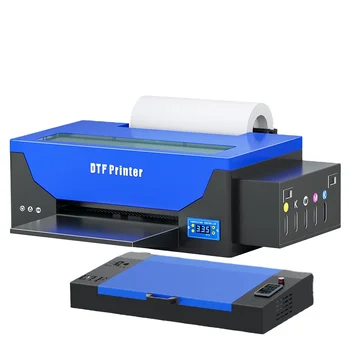
In recent years, the world of printing has witnessed a remarkable evolution that has transformed the way we think about creativity and personalization. Among the most exciting advancements in this field is DTF printing, a technique that stands out for its versatility and high-quality results. An imprimante DTF opens up a realm of possibilities for artists, entrepreneurs, and hobbyists alike, allowing them to express their unique visions on various fabrics with ease and precision.
DTF, or Direct to Film, is not just a printing method; it represents a shift in how we approach customization in textiles. This technology enables exceptional designs to be printed onto films, which can then be transferred onto a wide array of materials. The potential to unlock new creative avenues with an imprimante DTF is truly inspiring, as it empowers individuals to turn their imaginative ideas into tangible products. Whether you are looking to create custom apparel, accessories, or unique gifts, DTF printing can help transform your concepts into reality, reinforcing the connection between creativity and technology.
The Basics of DTF Printing
DTF printing, or Direct to Film printing, is an innovative method that allows for the transfer of vibrant images onto various fabrics. This process involves printing designs onto a special film using inkjet technology, followed by the application of adhesive powder while the ink is still wet. Once the powder adheres to the printed design, it is heated to create a bond between the ink and the adhesive. This preparation makes DTF printing an ideal choice for creating high-quality custom apparel with stunning colors and intricate details.
One of the key advantages of DTF printing is its versatility. It can be used on a wide variety of materials, including cotton, polyester, and blends, making it suitable for different types of garments and accessories. Unlike traditional methods, such as screen printing, DTF does not require the creation of stencils or screens, which significantly reduces setup time. This flexibility allows for smaller production runs and custom orders without sacrificing quality or durability.
Furthermore, DTF printing delivers exceptional results in terms of texture and finish. The prints are soft to the touch, ensuring that designs do not feel heavy or plasticky on the fabric. The longevity of the prints is another significant benefit; they are resistant to cracking and fading, even after multiple washes. This transformative power of an imprimante dtf enables creators to explore new design possibilities and produce high-quality items that can stand out in a competitive market.
Exploring Creative Applications
DTF printing opens up a world of possibilities for artists and creators looking to express their ideas on various surfaces. One of the standout features of an imprimante DTF is its ability to print vibrant designs on diverse fabrics, including cotton, polyester, and blends. This versatility empowers designers to explore unique textures and styles, blending colors and patterns in ways that traditional printing methods often cannot achieve. Whether it’s for fashion, home decor, or promotional items, DTF technology allows creative minds to experiment and push boundaries.
Another exciting application of DTF printing is personalized merchandise. Consumers increasingly seek one-of-a-kind products that reflect their individuality, making it a prime opportunity for creators to offer custom printed apparel and accessories. With an imprimante DTF, businesses can easily produce personalized items, from custom t-shirts and hoodies to bags and hats. This not only enhances customer engagement but also fosters a deeper connection between the brand and its audience. imprimante dtf The ability to produce limited-run designs on demand creates a sense of exclusivity that resonates in today’s market.
Lastly, the potential for collaborative projects is significantly enhanced with DTF printing. Artists can team up with other creators, businesses, or even non-profits to produce unique items that blend different styles and messages. This collaborative spirit can lead to limited edition collections or themed campaigns, showcasing multiple talents and ideas. With its efficiency and adaptability, an imprimante DTF serves as a bridge for collaboration, enabling creatives to join forces and unlock new dimensions of creativity in their projects.
Comparing DTF with Other Printing Methods
DTF printing stands out when compared to traditional methods like screen printing and direct-to-garment (DTG) printing. One significant advantage of DTF is its versatility; it can be used on various fabric types, including cotton, polyester, and blends, without extensive pre-treatment. In contrast, screen printing is best suited for larger fabric runs and can be less feasible for intricate designs or smaller quantities due to setup time and costs. DTG offers high-quality prints similar to DTF, but requires the fabric to be pre-treated and mostly works well only on cotton.
Another element to consider is the durability of prints. DTF prints are known for their excellent wash durability, making them a reliable choice for apparel that undergoes frequent washing. Both screen printing and DTG are durable as well, but DTF’s ability to maintain detail and color vibrancy even after multiple washes gives it an edge. This quality ensures that creative designs stay vibrant and intact over time, pleasing both the creators and the end users.
Cost-effectiveness is also a crucial factor when comparing DTF with other methods. While initial investment in a DTF printer may be higher, the overall cost per print decreases significantly with higher quantities. Screen printing can become costly for smaller orders due to setup charges, whereas DTG printing often incurs higher ink costs with lower margins for larger runs. DTF bridges the gap between quality and affordability, making it an attractive option for artists and businesses looking to optimize their production processes.